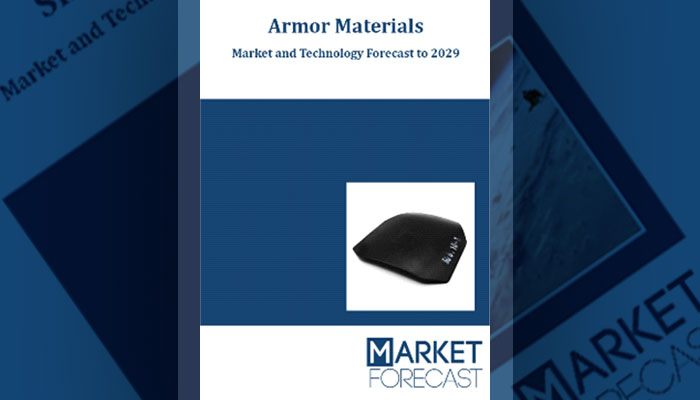Armor Materials are used to enhance the ballistic protection of both
military and civilian systems. They are used across all platforms
including land, naval and airborne systems.
The Global Armor Materials Market 2020 market is estimated at around
US$8.30 bn and is expected to reach US$15.50 bn by 2029. In this report
the market is segmented by Region, by Material, and by Armor Type.
Armor materials are used to develop varied layouts that add to the
survivability for ground combat vehicles. Essentially, armors are
segmented by type into two major categories, i.e. Reactive Armor and
Passive Armor. A reactive armor makes use of an explosive which is
sandwiched between two metal plates. The explosive detonates on impact
thus destroying the incoming projectile. A passive armor as the name
suggests make use of sheet materials with a high strength to weight
ratio. Earlier heavy metals were used to fabricate these armors.
Although, the growth in munition technology has brought about a change
in market trends.
OEMs are shifting towards lighter, non-metallic elements with strong
tactical capabilities to partake in the armored materials market.
By Material type, metals and alloys account for the largest segment
associated with this sector owing to the increased use of materials like
titanium. With the growth in material science engineering, materials
like ceramics and fiberglass are gaining momentum within this sector.
Ceramics is expected to be the fastest growing sector with a CAGR of
10.32%.
The Global Landscape for this vertical is segmented by region into North
America, Europe, Asia Pacific, the Middle East and RoW. North America
accounts for 37% of the global revenue generated by this market,
followed by APAC. Europe accounts for 19% of the revenue generated by
this sector, followed by the Middle East. Factors like the growing
insurgency and geo-political tensions within the Middle East serve as a
key factor that boosts the growth for this market. The deployment of
armored vehicles within this region to combat the uprising is expected
to promote market growth.
The Protection Systems Market is predominantly governed by the
development of non-armor solutions which is anticipated to add to the
tactical ability for a vehicle. The development of Active Protection
Systems is expected to be one of the key challenges to be faced by this
sector. The use of this technology reduces the vehicle weight and
increases its protection, thus enhancing its combat abilities against
incoming projectiles.
Consecutively, the introduction of government regulations is poised to
boost the market demand for the sector. The introduction of NATO STANAG
4649 enhances the industrial capacity and interoperability among users.
The agreement includes a detailed report on the various levels of
protection to be provided by armored vehicles. Qualifications tests are
designed by NATO and its allies to make sure that the combat vehicle
attains the expected standards prior to deployment.
This report is aimed at:
- Key market trends and their impacts on the changing market dynamics have been discussed.
- A comprehensive study based on the drivers, restraints, and challenges of this market has been covered.
- The impact of growing technological advancement on the market as well as its demand has been studied.
- The high growth segments have been studied comprehensively.
- The new opportunities provided by this market have been listed.
- The industrial shortcomings and the performance of the key players for this market have been analyzed.
The market has been segmented by Region, Application, Armor Type, Material, Type, and End-User:
Region
- North America
- Europe
- APAC
- Middle East
- RoW
Application
- Soldier Protection
- Civil Armor
- Armored Vehicle
- Others
Armor Type
- Reactive
- Passive
- Material Type
- Metals and Alloys
- Ceramics
- Para-aramid Fiber
- UHMPWE
- Composites
- Fiberglass
- Others
Type
- Vehicle Armor
- Others
- End-User
- Civil
- Defense





Be the first to comment on "Armor Materials – Market and Technology Forecast to 2029"